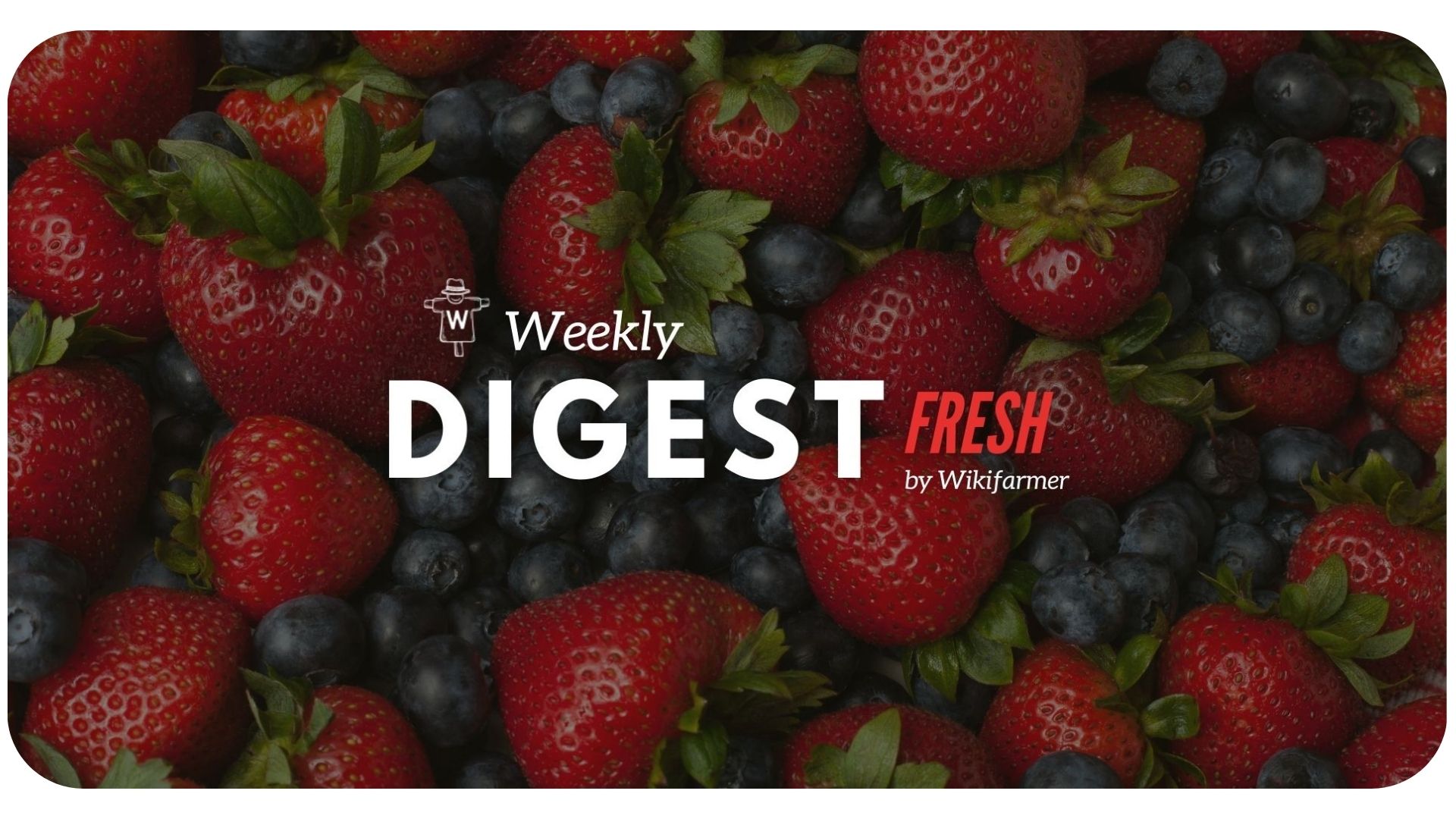Berries Market Digest w8

Weekly Berries Market Updates
Shifting the focus of the Weekly Fresh Digest Series
With the end of the European orange harvesting season drawing near, we are moving on to an increasingly attractive segment of the fresh fruits sector for our weekly fresh digest series.
The berries market worldwide has seen significant growth in recent years, with consumer demand for the product skyrocketing in countries and regions like Canada, the USA, and Europe, which comprise the three most significant consumers of berry products. This progress has prompted suppliers to expand berry acreage in Europe and worldwide. UN Comtrade reports that the EU's leading third-country sources of strawberries in the last three years have been Morocco, Egypt, and Turkey, while for fruits of the Vaccinium genus (which includes blueberries and raspberries), it was Peru, Morocco, and Chile.
Europe is deep in the fresh berries season, with prices generally stabilizing. Steadiness has occurred following the growing resilience of supply funnels as harvest peaks in more and more producing countries. Thus, it is now the optimal moment for us to start extracting insights based on observing berries' commercial transactions around the globe.
Main Price Movements in the EU
As with most fresh fruit offerings, demand for strawberries, blueberries, and other types of berries rose right before and after Valentine's Day but subsided by the end of the week. The only exception was strawberries, which are paramount to the festivities, with demand for them staying robust up to the end of last week. This supported Greek and Spanish strawberries to remain at high levels, at least up to the end of last week.
.png?upscale=true&width=733&height=266&name=Y2Ane-mean-strawberry-prices-in-german-wholesale-markets%20(3).png)
Overview of Berry Supply in the EU during the Current Season
European produce first became available in the region's primary fresh produce wholesale markets in late October, with the German markets being our point of reference due to their central commercial significance. Dutch, Belgian, and German suppliers took the lead in providing local produce in late October, starting with blueberries. These countries also make for the biggest consumers of blueberries in the EU.
In the strawberries segment, Greek produce soon joined the market, consistently giving good signs regarding quality, in contrast to third-country produce like that of Moroccan, Ethiopian, and Egyptian origin, which often faced complaints regarding their poor coloring. Still, and especially for Egyptian produce, third-country fruits compete fiercely with European ones. Greek strawberries remain plentiful in the markets, posing as an established, high-quality, cost-effective option. The harvest in the country began at its regular timestamp, the first week of November, and was not harmed too severely by the prolonged hot and dry periods leading up to October. However, local suppliers we have partnered with report that they face severe challenges, mainly driven by the extreme scarcity of labor and turbulence called by frequent bans on widely used fertilizers and plant protection products. In total, supply was able to meet demand promptly.

The same was true regarding raspberries, with Moroccan and Chilean fruits leading the way in supply, often met with quality complaints. On this frontier, we should recognize Portugal's emergence as a trusted supplier of high-quality berries of all the main categories, which has genuinely impressed the markets. This development was evident in the amount of requests we received for Portuguese produce during our participation in Fruit Logistica 2024.
Emerging Challenges in the Berries Segment
Apart from the roaring consumer demand for berries, another factor that has sparked our interest is related to the existing and upcoming supply-side challenges expected to cause sector-wide fluctuations. Matters like this plague every fresh fruit's supply, ranging from production shortfalls due to poor weather conditions and plant diseases to legal issues. For example, up to now, packing houses have traditionally used plastic heavily in their blueberry packaging. However, it is precisely these unsustainable containers that EU countries like France have started banning. This will force packagers to think outside of the blueberry box.
Thus, we at Wikifarmer have started paying particular attention to this market's developments to detect opportunities and dangers that may arise. Operators investing in innovative and sustainable practices will better manage to stay ahead of the game, as happened in the orange and Kiwi segments we examined in our email series. Such signs of maturation have already become present in various cases of suppliers, who have developed new strawberry varieties under the scope of better satisfying consumers' needs and overcoming harvest and supply challenges.
.png?width=450&height=87&name=New%20Logo%20(1).png)